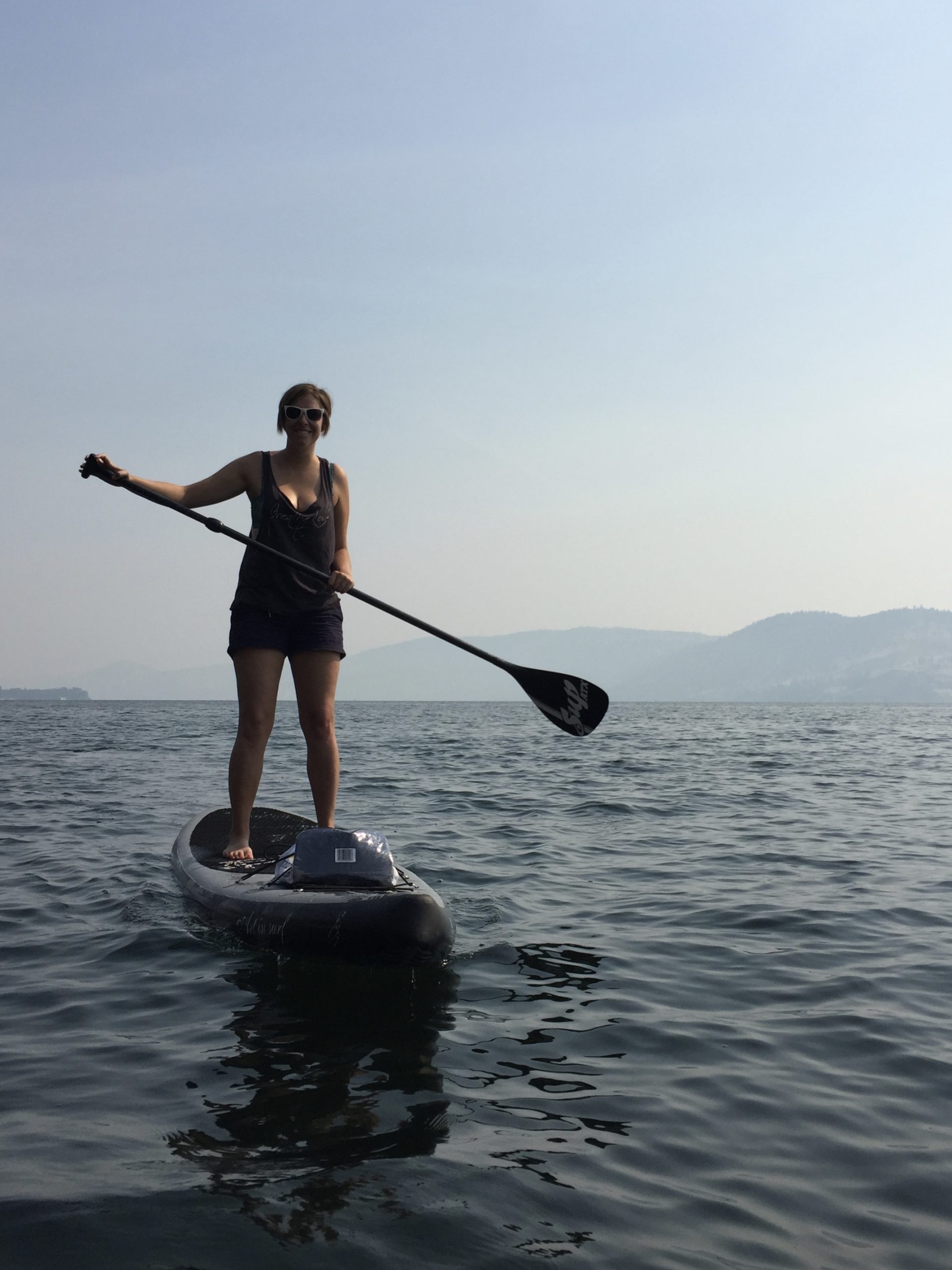What I learnt from my first weekend paddleboarding!
Look out at the beautiful Lake Okanagan on any given day and you’ll almost always see someone stand-up paddleboarding, making the most of our summers in paradise. I have long admired from the shore, remarking on their grace and imagining the quiet calm of being out on the lake, but had not yet had the opportunity to try it for myself. Then, a couple weekends ago, I finally got my chance to try paddleboarding!
I had a great time and, as a chiropractor, I couldn’t help but ponder while out on the water of the many ways it can benefit both the body and mind. Soaking up the sun and the views are obviously lovely, but here are four more benefits of stand-up paddleboarding!
Core Stability
Once you step (or kneel) onto a SUP (stand-up paddleboard) you will instantly realize how much of your body is being engaged in this seemingly simple activity. Your core is important in all activities and if you engage it properly, it can help protect your low back from injury during the many activities of day-to-day life. Your core is primarily made up of your transverse abdominus, multifidus, obliques, diaphragm, and your pelvic floor. These all work together like a closed cylinder to help provide stability to your spine and a fixed point from which your limbs can move.
Balance Training
When you stand for the first time on a board or battle rougher waters than expected, you’ll know right away that balance is key! Dynamic surfaces are one of the best ways to train for balance and being out on the water certainly fits that bill. The challenge of balance increases as you raise your centre of gravity. This basically means that sitting is the easiest position and the challenge gets harder as you kneel and eventually stand. If your first time is anything like mine, you’ll fall a few times. That’s ok! Just get back on your board and try again. It’s part of learning and helps you not to take yourself too seriously.
Shoulder Stability
This is a somewhat “hidden” benefit to rowing and pulling activities, such as SUPing. As you paddle from either side, your arms are working hard to move you and the board forward. Depending on the roughness of the water, you’ll sometimes have to fight wind and waves too! Your whole shoulder girdle is brought into play for these movements to happen and to keep your shoulder stable and strong. Your rotator cuff muscles, trapezius, deltoids, and pectorals all “turn on” to play their role. Bicep curls may give you the appearance of strong arms, but building stable and strong shoulders with functional activities like paddling is extremely important to help prevent injuries.
Stress Relief
We live in one of the most beautiful places in the country and getting out on the lake to enjoy it is a great way to relax. The repetitive nature of paddling and rowing activities can also have a meditate component. Just getting out for 30 minutes is a fantastic way to disconnect from your stressors and reconnect with nature. Press the reset button. You can also make it a workout for as long as you want, challenging yourself to gain in speed and stamina, and let your body and mind become totally engaged in the rhythm of the paddle.
Learning a new skill is usually a challenge, especially for those who may not consider themselves the most athletic kid on the block (*cough…me*). I discovered that stand up paddleboarding is so adaptable, you really can start anywhere; even just getting to sit on your board and enjoy the view can be therapeutic! I really enjoyed my first weekend of paddling – feeling my body engage in a new activity and new challenges. I look forward to getting out again soon and discovering even more benefits of this awesome sport.


